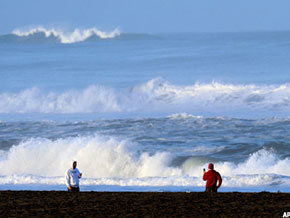NEW YORK What would the Red Hot Chili Peppers call it? Caliconfiguration?
A California county board of supervisors have passed a proposal that would separate the state into two regions -- North California and South California -- which would make them the 50th and 51st states and alter the Golden State's economy. It's a map that looks more like gerrymandering than geography. The proposed division would put the state's two most economically powerful cities -- San Francisco and Los Angeles -- in the same state.
Jeff Stone, a Republican Riverside County supervisor in California's inland Third District, said he wanted to secede from the state and its "liberal' policies with the creation of "South California."
"This has struck a chord with a lot of people in the state who have suffered economically,'' Stone told the Los Angeles Times. "We know it's going to be a challenge to form a second state, but it's not impossible."
 |
Stone's chief of staff, Verne Lauritzen, told TheStreet that the proposal passed 4-0, but the board stipulated that the supervisor could not use any county resources to promote the measure. Lauritzen said that they expected to start a grass-roots campaign to push the proposal to the state Legislature and U.S. Congress.
In the hypothetical event of partition, "North" California would include San Jose, San Francisco and Los Angeles.
"There are many factions who believe that the dysfunction and size of California has made it extremely difficult to manage," said Matthew Mahood, president of the San Jose Silicon Valley Chamber of Commerce. Mahood, however, said there would be major concerns about water if there were a partition.
Southern California gets most of its water via aqueducts that are connected to sources in Northern California. Mahood said that the south needs its water, and a split into two states would worsen the problem.
San Diego, Orange County and Riverside County would be part of Stone's proposed state of South California.
"It's more about how [a secession] would affect the taxes," said Heidi Larkin-Reed, president of the Orange County Chamber of Commerce. Businesses would continue to function, but a split would have consequences on property taxes.
Larkin-Reed said that she was on a board years ago in a failed attempt to split San Marino, Calif., into two counties: "Forming a new county is almost impossible," and she added that to form a new state would be even more difficult.
Ross Starr, a professor of economics at University of California-San Diego, told TheStreet that the usual rationale for division is not economic but political. Dominican republic trademark infringement Attorney
"Not really much [economic] implication, though it depends where you draw the line, and who gets all the poor people," Starr said in an email. "The usual suggestion is draw an East-West state line somewhere north of the Tehachapis. That leaves both states with ample ports, vigorous industries, major universities."
No hay comentarios:
Publicar un comentario